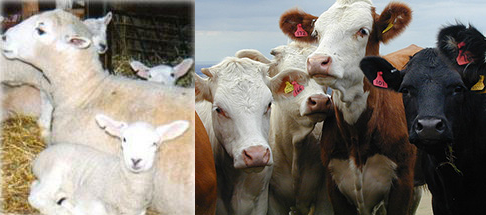It's a New Day in Public Health.
The Florida Department of Health works to protect, promote, and improve the health of all people in Florida through integrated state, county, and community efforts.
Q Fever
Florida Health
Disease Control- DiseaseControl@flhealth.gov
- 850-245-4444
-
Florida Health
4052 Bald Cypress Way
Tallahassee, FL 32399
Q fever is a bacterial zoonosis (disease capable of being transmitted from animals to people) caused by Coxiella burnetii, a rickettsial organism. Anyone can get the disease if they are infected with C. burnetii bacteria. Blood tests can be used to diagnose Q fever.
People at highest risk for Q fever are those who work with infected animals, including veterinarians, researchers, meat workers, sheep workers and farmers. Q fever can be successfully treated with antibiotics, especially when treatment is initiated early in the course of the disease.
- SYMPTOMS
- TRANSMISSION
- Q FEVER OCCURRENCE IN FLORIDA
- References
Q fever in humans is usually either asymptomatic or mistaken for an acute viral illness due to the symptoms of fever, chills, headache, weakness, malaise (a general sick feeling), and severe sweats. The incubation period is variable, although 2-3 weeks is considered common. In most cases, the illness is of short duration, lasting less than two weeks, even without treatment. Rare complications include pneumonitis (inflammation of the lungs), neurologic problems and, among people with abnormal or prosthetic heart valves, endocarditis (inflammation of the heart). Complications are more likely to occur among people who have weakened immune systems.
C. burnetii may be found in sheep, cattle, goats, cats, dogs, some wild animals (including many wild rodents), birds and ticks. Animals shed the organism in their urine, feces, milk and especially in their birth products. Most infected animals do not show signs of illness. Q fever is spread to people primarily through airborne dissemination of contaminated dust. Dust becomes contaminated from the tissues or bodily fluids of animals infected with C. burnetii bacteria.
Direct contact with infected animals or materials that they have contaminated (such as straw or other bedding materials) may also cause an infection. Raw or unpasteurized milk from infected cows or goats may be capable of spreading C. burnetii. Direct person-to-person spread is not likely.
Prevention is based on the control of this disease in domestic animals. People who work with animals that may be infected need to know the signs and symptoms of Q fever and seek treatment if they feel they could be infected. There is a Q fever vaccine that is currently not available for general use, but may be available through the Department of Defense for persons who are known to be at high risk of exposure. Q fever is listed as a potential bioterrorism agent because it can be spread to people through an airborne route.
1. Benenson AS (ed.). Q fever. In Control of Communicable Diseases Manual, Sixteenth Edition. United Book Press, Baltimore. 1995: 379 - 382.
2. Dupont HT, Thirion X, Raoult D. Q Fever Serology: cutoff determination for microimmunofluorescence. Clin Diagn Lab Immunol. 1994 Mar;1(2):189-96.
3. Fournier PE, Raoult D. Predominant immunoglobulin A response to phase II antigen of Coxiella burnetii in acute Q fever. Clin Diagn Lab Immunol. 1999 Mar;6(2):173-177.
4. Florida Department of Health Preventable Diseases Annual Report. 1964 p.191.
5. Harrison RJ, Vugia DJ, Ascher MS. Occupational health guidelines for control of Q fever in sheep research. Ann NY Acad Sci. 1990;590:283-90.
6. Marrie TJ, Stein A, Janigan D. Route of infection determines the clinical manifestation of acute Q fever. J Infect Dis. 1996;173:484-7.
7. Pinsky RL, Fishbein DB, Greene CR, Gensheimer KF. An outbreak of cat-associated Q fever in the United States. J Infect Dis 1991 Jul;164(1):202-4.
8. Wisseman, CL, Strickland, GT (Ed) 26. Q Fever Hunters Trop Med 7th Edition. W B Saunders Co 1991, pp 282-285.




Connect with DOH